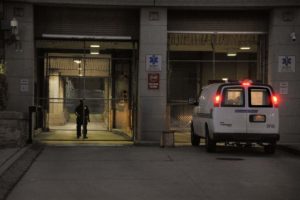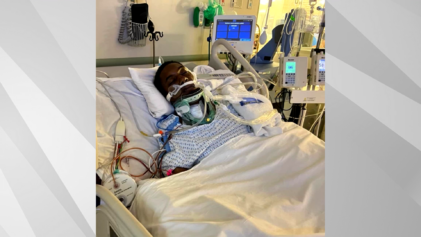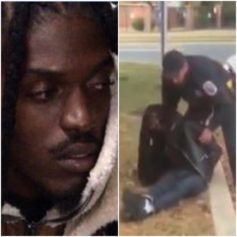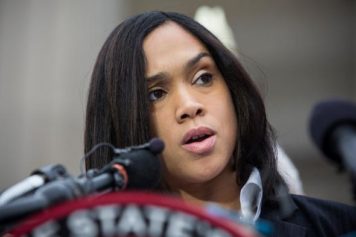
A Baltimore Police transfer van pulls into the Baltimore Central Booking and Intake Center on May 7, 2015. (Karl Merton Ferron/Baltimore Sun/TNS via Getty Images)
Almost two months after the city of Baltimore exploded in riots over the death of Freddie Gray, local police are reviewing their policies. Reuters reported Baltimore police plan to install video cameras in police vans. These cameras will also be equipped with recording capabilities. Local police have also said they will review their use of anti-riot gear.
“The Baltimore Police Department is installing video cameras capable of recording in its vans following protests over the April death of Freddie Gray, a black man who suffered severe injuries in the back of a police van,” said Reuters.
Gray was arrested by police for possession of a knife. He was placed in the back of a police van and deliberately not secured. The van was driven at high speeds and made frequent sudden stops in a process police nicknamed “rough riding.” Since Gray was not restrained by a seat belt, he was violently thrown around and the sudden impact eventually snapped his spine. He died a week later in police custody. Six Baltimore police officers are currently facing murder, manslaughter and assault charges.
Reuters also reported the van Gray was riding in was equipped with a surveillance camera, but it wasn’t working.
Protests over Gray’s death eventually turned violent resulting in an estimated $9 million worth of property damage, according to Time magazine. The city also reported 144 buildings and 15 cars were burned during rioting. Baltimore Mayor Stephanie Rawlings-Blake declared a curfew and Maryland Gov. Larry Hogan called out the National Guard to restore order.
However, just like in Ferguson, Mo., the protests called attention to widespread abuse in the Baltimore Police Department. A report by The Baltimore Sun showed local police had a long history of using excessive force, mainly against Black people.
“Over the past four years, more than 100 people have won court judgments or settlements related to allegations of brutality and civil rights violations,” said The Sun. “Victims include a 15-year-old boy riding a dirt bike, a 26-year-old pregnant accountant who had witnessed a beating, a 50-year-old woman selling church raffle tickets, a 65-year-old church deacon rolling a cigarette and an 87-year-old grandmother aiding her wounded grandson.”
The Baltimore Sun also reported the city had shelled out close to $6 million to settle police brutality lawsuits since 2011.
In the aftermath of the protests, Rawlings-Blake and Baltimore Police Commissioner Anthony W. Batts both called on the U.S. Justice Department to investigate the Baltimore Police Department’s history of excessive force. The city has pledged to equip all police officers with body cameras by 2019, said Time.
Maryland legislators have also attempted to tackle police brutality. However, The Baltimore Sun reported legislation requested by Rawlings-Blake has run into a wall in Annapolis, Md.
“One bill introduced at the mayor’s behest has been killed, and the other is being quashed in committee,” said The Sun. “With a week left in the annual 90-day legislative session, only a handful of relatively minor bills remain alive in the General Assembly that would seek to hold police more accountable for how they treat citizens.”
Civil rights activists are frustrated legislators seem to be dragging their feet on passing legislation that would hold police accountable.
“They had a real opportunity to make some improvements in police practices and take steps to help improve the police community relationship,” said Sara Love, public policy director for the American Civil Liberties Union of Maryland in a Baltimore Sun article. “This issue isn’t going away.”


